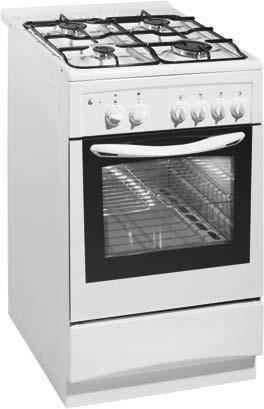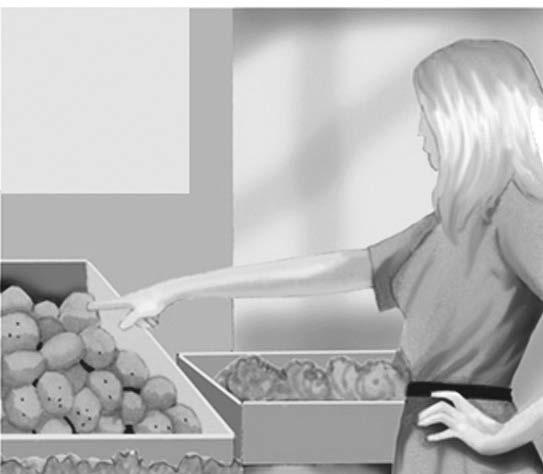WELCOME
A GETTING TO KNOW YOU
Introducing yourself
1 Read the letter quickly. Write the names under the photos.
Hi Paulo, My name’s Nicole, and I’d like to be your pen pal. I got your name from my teacher, Ms. Edwards. She lived in Brazil for three years, and she’s a good friend of your mother’s.
So, what would you like to know about me? I’m 15 years old. I live in a small house in Orlando, Florida, with my mom and my two little brothers. They’re OK, but they can be annoying sometimes. I go to Bluecoat High School. I like school, but my teachers always give us too much homework.
I usually do it when I get home from school, but I’m not doing that today – that’s because I’m writing to you!
I like listening to music and playing games on the computer. I also like playing the guitar. I play in a band with some of my friends. I like sports, too. I play volleyball and tennis. I’m on the school tennis team. We usually play matches on Saturday mornings. That’s a bit of a problem because I don’t really like getting up early on the weekend.
2 Read the letter and complete the form about Nicole.
Name Nicole Hometown Age Family Likes Dislikes Asking questions
3 Match the questions with the answers to make mini-dialogues.
1 What do you do?
2 What are you doing?
3 What do you like doing?
4 Do you like studying English?
5 Where are you from?
6 Are you 14?
a I’m watching TV.
b Yes, it’s great.
c I’m from Mexico.
d I’m a student.
e No, I’m 13.
f I love playing tennis.

.
But what about you? I hope you’ll want to write to me. There are lots of questions I want to ask you. Things like: What’s life like in Brazil? Do you like your school? What’s it like? What’s the weather like in Rio? Do you have a big family?
All that kind of stuff, to help me get to know you. Ms. Edwards says you like surfing, but that’s all I know about you.

So please write. I’d love to have a Brazilian friend. Best, Nicole












4 SPEAKING Work in pairs. Ask and answer the questions in Exercise 3. Give answers that are true for you.
5 Choose the next line for each of the minidialogues in Exercise 3.
1 What’s your teacher’s name?
2 Do you live in Mexico City?
3 What school do you go to?
4 When is your birthday?
5 Would you like to go out and do something with me?
6 Me, too. Do you want to come over and play video games?
6 SPEAKING Work in pairs. Think of one more line for each dialogue. Then practice your dialogues.
Whatdoyoudo? I’m a student.








Whatschooldoyougoto?










BostonLatinHighSchool.

4
WELCOME
A GETTING TO KNOW YOU
Introducing yourself
1
Background information
Brazil (population 191,908,000) is a country in South America. It is the fifth largest country by geographical area and the fifth most populous country in the world. Brazil has a coastline of more than 7,491 kilometers (4,655 mi). Brazil was a colony of Portugal until its independence in 1822.
Rio de Janeiro (population c. 6.3 million), commonly referred to simply as Rio, is the second largest city in Brazil. It is famous for its beaches, its carnival, and famous landmarks such as the gigantic statue of Christ the Redeemer. It was selected to host the soccer World Cup Finals in 2014 and the 2016 Summer Olympics and Paralympics.
Orlando (population 238,000, metropolitan area more than 2 million) is a major city in Florida, best known for being “The Theme Park Capital of the World,” attracting more than 57 million visitors annually, but also a major center for conferences and business conventions.
As a warm-up, ask students: Have you ever written to friends online that you rarely see? What did you write about?
Tell students they are going to read a letter from a girl in the U.S. to a boy in Brazil. Ask students to read the letter and look at the photos. Do the first item with them as an example, if necessary. Students complete the exercise. Check answers.
Answers
Nicole (left); Paulo (right)
2 Check/clarify: hometown. Students read the text more carefully to answer the questions then check answers with a partner before whole-class feedback.
Answers
Nicole 15 Orlando, Florida Mom, two little brothers School, listening to music, playing computer games, playing the guitar, sports, volleyball, tennis Getting up early on the weekend
Asking questions
3 Ask students to read through questions 1–6. Check any problems. Students match the questions with the responses. Allow them to compare answers with a partner before checking with the whole class.
Answers
1 d 2 a 3 f 4 b 5 c 6 e
Optional activity
Ask students to cover up the responses a–f. Divide the class into pairs, and ask them to think of possible responses to questions 1–6. Ask them to share some of their ideas with the whole class. Then ask them to complete the exercise and compare their answers with those in the book.
4 SPEAKING In pairs, students ask and answer the questions. Encourage them to focus on the intonation of the questions. Monitor and help students who have any difficulties with pronunciation and intonation. Ask some pairs to share their dialogues with the whole class as feedback.
Optional activity
Divide the class into different pairs. Ask students to think of a famous person and imagine they are that person when they answer the questions. Their partner has to guess who they are. When they have guessed each other’s new personality, ask students to do the same activity with a different partner.
5 Reorganize the pairs from Exercise 4, or let students work in the same pairs. Students read through questions 1–6. Check any problems. Students add the questions to the dialogues in Exercise 3. Check answers.
Answers
Dialogue 1 (d) – 3 Dialogue 2 (a) – 5 Dialogue 3 (f) – 6 Dialogue 4 (b) – 1 Dialogue 5 (c) – 2 Dialogue 6 (e) – 4
6 SPEAKING Students work in pairs and think of one more line for each of the dialogues. Students then practice their dialogues. Monitor and encourage fluency. Do not correct errors unless they hinder comprehension. You could write down any repeated errors to discuss later as a class. Ask a few pairs to give feedback to the rest of the class.
Mixed-ability idea
Stronger students: Encourage stronger students to attempt to remember the dialogues and say them without looking at their book.
Weaker students: Ask students to spend some time writing their dialogues before practicing them.
Optional activity
If students have access to cell phones, tablets, or laptops, ask them to write an email about themselves and send it to another member of the class. They should follow a similar format to the example in Exercise 1 and answer the questions from Exercise 5. Monitor and help with any questions. When students have received an email, divide the class into pairs for students to describe their new pen pal to a partner.
X 5
5.1 T-4
Your space
The weather
You could assign a homework research task for students to find out about the cities in the pictures. You could then start off the lesson by asking students to tell the class what they have found out. Books closed, ask students: Can you describe the weather in your country? How does it change at different times of the year? Have you ever gone on vacation to a country where the weather is different? Write any weather vocabulary on the board. Elicit the vocabulary required for Exercise 1.
1 Use the pictures to check understanding of the weather vocabulary. Say the words for students to repeat and check pronunciation. Ask students to complete the exercise. Monitor and deal with any difficulties.
2 SPEAKING Divide the class into pairs. Ask students to compare their answers with a partner. Encourage stronger classes to give reasons for their choices. Ask some to share their answers with the whole class as feedback.
3 1.02 Ask students what they know about the weather in the U.S. Check/clarify degrees Celsius Play the audio while students listen and complete the exercise. Ask students to compare their answers with a partner before a whole-class check.
Answers
cold, warm, hot, sunny, humid, dry, cloudy, windy, rainy, wet
Background information
Although the Celsius scale is used to measure temperatures worldwide, the use of the Fahrenheit scale is more common in U.S. weather forecasts. According to this scale, water freezes at 32°F and boils at 212°F. The formula to convert Fahrenheit into Celsius is: (°F − 32) ÷ 1.8 = °C.
4 1.02 Look at the map with students and draw their attention to the three cities. Say the names of the cities to help students recognize them on the audio. Play the audio again for students to complete the exercise. Check answers with the whole class and deal with any queries.
Answers
Boston: cold, 8 degrees, very windy, a lot of rain, wet New York City: warm, 16 degrees, dry, a little cloudy Washington, D.C.: 20 degrees, hot, clear, sunny, a little humid
5 SPEAKING Divide the class into pairs and ask them to look at the pictures of different cities. Ask students to describe the weather in each picture. Ask some to share their answers with the whole class, and make a note of any interesting new vocabulary on the board.
Language note
A common mistake is for students to say *How is the weather like? when they mean to say What’s the weather like? Discuss this common error with the class.
Optional activity
Write or dictate the following questions: 1 What is the highest temperature ever in your country? 2 What is the lowest temperature ever in your country? 3 What is the world record for the most rain in one hour? Where was it? 4 What is the world record for the most snow in one year? Where was it? 5 What is the world record for the strongest wind? Where was it?
Ask students to work in pairs and discuss the questions. Allow each pair one guess for each question. If you are using an Interactive Whiteboard (IWB), do online searches to find the answers to the questions. Give a point to the group that gets closest to the answer.
Alternatively, if students have access to the Internet, have a race to see who can find the answers first. After checking answers, ask students to discuss the most extreme weather they have ever encountered. Ask some to share their experiences with the whole class as feedback.
Answers
1–2 Depends on country 3 305mm in 42 minutes (Missouri, U.S., 1947) 4 31.5 meters (Washington, U.S., 1971) 5 484 km/h (Oklahoma, U.S., 1999)
Families
1 Read the instructions with the class. Go through the first pair as an example, making sure students understand why father is the answer. Check answers and pay attention to the pronunciation of the words. During feedback point out that the word cousin is the same for male and female.
Answers
1 father 2 sister 3 uncle 4 grandpa / grandfather 5 wife 6 daughter
Optional activity
When students have completed the exercise, divide the class into pairs and set a two-minute time limit for them to add as many new family words to the list as possible, e.g., niece / nephew; grandson / granddaughter. After two minutes, ask the pair with the most words to read their list aloud to the class. Elicit any additional suggestions from the rest of the class. Check pronunciation of any new words and write them on the board. Encourage students to add any new words to their notebooks.
2 1.03 Tell students they are going to listen to a conversation between Nicole and Paulo from page 4. Play the audio while students complete the exercise. Check answers. If necessary, play the audio again, pausing to clarify answers.
Answers
1 brother 2 brother 3 mother/mom 4 aunt 5 aunt 6 uncle 7 cousin 8 cousin 9 cousin 10 grandpa / grandfather
3 SPEAKING Students ask each other questions about their families. With weaker classes, give students some time to prepare questions before doing the exercise. Encourage students to correct each other’s sentences if necessary. Ask a few pairs to tell the class about their partner’s answers. See if any of the students have any unusual families (for example, twelve uncles or three cousins named John, etc.)
T-5
The weather

1 What kind of weather do you love, like, or hate? Draw a , , or next to each one. sunny wet cloudy warm cold windy humid rainy dry freezing hot foggy



SPEAKING Work in pairs. Tell your partner. Iloverainyweather.







1.02 Listen to the weather forecast for a part of the U.S. Check ( ) the weather words in Exercise 1 that you hear.


1.02 Listen again. What is the weather going to be like in Boston, New York City, and Washington, D.C.? Write notes.




























5 WELCOME
5
It’swindyandverywet. Families 1
1
2
3
2
1
6
2
7
3
8
4
9
5
10
3
Mi M ami Loondndon n Istaanb
ul Rio Os O lo Boston New York City Washington
2
3
4
SPEAKING Work in pairs. Look at the pictures. Ask and answer questions. What’s the weather like in Miami?
Look at the family words. Complete the pairs.
mother and 4 grandma and
brother and 5 husband and
aunt and 6 son and
1.03 Listen to Nicole talking to Paulo on Skype. How are these people related to Nicole?
Colin
Mike
Luke
Jacob
Sharon
Kyle
Becky
Sam
Jodie
Joe
SPEAKING Work in pairs. Ask each other about your families. Doyouhaveanycousins? What’syouruncle’sname?
nbul
D.C.
B EXPERIENCES
Meeting people
1 Put the parts of dialogue in order. Write 1–10 in the boxes.
A Really! Where? When?
A What book was it?
A Did he give you one?
1
A Have you ever met a famous person?
A Did you say anything to him?
B It was my English textbook, believe it or not. I had it with me to help me with my English.
B Yes, he was really nice. I didn’t have any paper with me, so he signed a book that I was carrying.
B It was last summer. We were on vacation in LA. We were walking out of a restaurant when he walked in.
B Yes, I did. I asked him for an autograph.
B Yes, I have. Bradley Cooper.

2 1.04 Listen and check.
3 SPEAKING Work with a partner. Practice the conversation. Change names, places, and other details.
4 Underline examples of the following tenses in Exercise 1.
1 A simple past positive statement.
2 A simple past negative statement.
3 A simple past question.







4 A simple past short answer.
5 A past continuous statement.
6 A present perfect question with ever.
7 A present perfect short answer.
Irregular past participles
1 Write the past participles of these irregular verbs.
1 think 7 eat
2 drink 8 make
3 wear 9 run
4 see 10 win
5 lose 11 read 6 hear 12 ride
2 Complete the questions with eight of the past participles in Exercise 1.
0 Who’s the most famous person you’ve ever seen ?
1 What’s the strangest food you’ve ever ?
2 What’s the best book you’ve ever ?
3 What’s the funniest joke you’ve ever ?

4 What’s the most expensive thing you’ve ever and never found again?
5 What’s the best prize you’ve ever ?
6 What are the most embarrassing clothes you’ve ever ?
7 What’s the longest phone call you’ve ever ?

3 Answer the questions in Exercise 2 with your own information. Give details. The most famous person I’ve ever seen is Lionel Messi.
4 Work in groups of eight. Each person takes one of the questions from Exercise 2 and thinks of two more questions to ask.
Who’s the most famous person you’ve ever seen? Where did you see him/her? Did you say anything to him/her?
5 SPEAKING Ask the other students in your group your questions.
6 SPEAKING Report back to the group.
ThemostfamouspersonCarlahasseenis Lionel Messi. She saw him outside a store in Barcelona.Shedidn’tsayanythingtohim.
6
B EXPERIENCES
Meeting people
Background information
Bradley Cooper (born January 5, 1975) is an American actor and producer. He has appeared in films including the Hangover trilogy (2009–2013), Limitless (2011), and Silver Linings Playbook (2012), for which he received an Oscar nomination as Best Supporting Actor. For American Sniper (2014) he was nominated again for an Oscar as Best Actor in a Leading Role.
1 Ask students: Have you ever met a famous person? Who? Where? What did they say? If they haven’t met anybody famous, ask them: Who would you like to meet? Listen to some of their ideas to find out who the class would most like to meet. Tell students they are going to read a dialogue about meeting a famous person. Check/clarify: signed, autograph. Divide the class into pairs, and ask students to rearrange the sentences in the dialogue. Monitor to help with any questions.
Answers
3 9 7 1 5 10 8 4 6 2
2 1.04 Play the audio for students to listen and check their answers to Exercise 1. Check answers with the whole class before playing the audio again, pausing regularly for students to repeat and practice the intonation patterns.
3 SPEAKING In pairs, students practice the conversation. Monitor to make notes on students’ pronunciation and intonation for future reference, but don’t interrupt the flow of their conversations to correct them. For further practice, encourage students to invent their own similar dialogues. Ask some to share their best ideas with the whole class. Ask them to omit the name of the person, and ask the rest of the class to try to guess their identity.
4 This exercise is an opportunity for students to practice three different past tenses. It also gives the teacher the opportunity to assess students’ awareness of the tenses. At this level, students should have encountered the three tenses before, but it is always worth revisiting them for further practice.
If students are unclear about the different uses of the three tenses, ask concept-check questions to clarify how they are used. For example, write on the board: Have you ever met a famous person? Ask students: Does the question refer to a specific time in the past or to an undefined past time? (Undefined.) Compare this with one of the simple past sentences, for example: Did you say anything to him? Elicit that we use the simple past to refer to a specific point in time.
To check that students have understood the difference between the simple past and past continuous, give them the following sentences and ask them to explain what they mean. Remind them to think about which action happened first or if one action was already in progress (past continuous) when another action occurred (simple past). Is the meaning the same or different?
1a When my brother arrived (1), we cooked a meal (2).
1b When my brother arrived (2) I was cooking a meal (1). (– different)
2a When the phone rang (2), I was eating dinner (1). 2b I was eating dinner (1) when the phone rang (2). (– same)
Ask students to reread the dialogue and find different examples of the three tenses.
Answers
1 It was last summer. / We were on vacation in LA. / … when he walked in. / I asked him for an autograph / … he signed a book … / It was my English textbook, believe it or not. / I had it with me to help me with my English.
2 I didn’t have any paper with me, 3 Did you say anything to him? / Did he give you one? / What book was it?
4 Yes, I did. 5 We were walking out of a restaurant … / … a book that I was carrying … 6 Have you ever met a famous person? 7 Yes, I have.
Irregular past participles
1 Ask students to read through the list of 12 verbs. Check that students are clear on the difference between the simple past and the past participle. Students complete the exercise. Check answers with the whole class.
It may be helpful to copy the verb list onto the board and to ask students to come up and complete it with their answers.
Answers
1 thought 2 drunk 3 worn 4 seen 5 lost 6 heard 7 eaten 8 made 9 ran 10 won 11 read 12 ridden
2 Students read through sentences 1–8. Check any problems. Go through the example as a class, if necessary. Students complete the exercise and check their answers with a partner before wholeclass feedback. During feedback, point out the use of the present perfect to refer to a past action at an unspecified time.
Answers
2 eaten 3 read 4 heard 5 lost 6 won 7 worn 8 made
3 Students work individually and answer the questions in Exercise 2 with their own information. Encourage them to go into as much detail as they like. It is a good idea for students to write their answers in their notebooks so they can refer to them later.
4 Read through the instructions and the example questions. Divide the class into groups of eight, and assign a different question to each student. Ask students to write two follow-up questions to ask.
5 SPEAKING Students ask the other students in their group their questions. This works well as a mingle activity, with students circulating and posing questions to each member of their group, in turn. Encourage students to make a note of the answers they receive in their notebooks.
6 SPEAKING Select individuals to report back to the group. As a group, students can decide which story was the most interesting.
X T-6
Losing things
Background information
Shipping refers to the transport of goods. About 90% of international trade is done by sea. Large containers are carried on trucks to ports, where they are loaded onto huge cargo ships. When people move to another country, furniture and other household items are packed by professional moving companies before storage in one of the large containers.
As a warm-up, ask students to imagine that they are going to move abroad. Ask them: What would you need to do? How would you move all the things in your house? What might go wrong? Have some students share their ideas with the class.
1 Tell students they are going to read a story about a family who moved from Indonesia to the U.S. Students read the text quickly to find the answer to the question. Tell them it is not important to understand every word. Check/clarify: shipping company, containers
Answer motorcycles
2 Read through the questions with students and check understanding. Give students some time to underline the key words in the questions. Students read the text again and write answers using the words in parentheses. Tell students to underline the parts of the text where they found the answers. Students check their answers with a partner before feedback.
Answers
1 about 10 years ago 2 six months later 3 about ten years 4 last year 5 about 10 weeks later 6 two months ago
3 WRITING The planning for this exercise can be done in class, and the writing can be assigned for homework. Tell students they are going to write a story about something they lost and that the story doesn’t have to be true. You could tell them a story of your own as an example.
Give students a few minutes to think about their answers to the questions and to make notes of their answers. Divide the class into pairs for students to tell their stories to their partners. They should expand on the notes they have made in order to make the story as interesting as possible. Finally, students should make additional notes in their notebooks before writing their final version in class or at home.
Furniture
1 As a warm-up, ask students to draw a floor plan diagram of their living room and label all of the furniture and other items it contains. Divide the class into small groups and ask students to compare their diagrams. During feedback with the whole class, ask students to name items of furniture and write any interesting vocabulary on the board.
Ask students to look at the pictures and work with a partner to complete the exercise. As a test of memory, you could encourage them to complete
the exercise without looking back at the text. Check answers with the whole class.
Answers
desk (checked) chair (checked) dresser (checked) sofa (checked) curtains (checked) carpet (checked)
2 SPEAKING Ask students to name the remaining items and check answers. Take this opportunity to work on pronunciation, saying the names of the furniture for students to repeat together as a class and then individually. Divide the class into pairs, and ask students to discuss why they think the items were not put into the container. Monitor to help with vocabulary. Ask a few students to share their ideas with the whole class as feedback.
Possible Answers
shelves mirror toilet lamp stove shower
Optional activity
To expand on the activity and in preparation for Exercise 3, ask students to name the room in which they would find each item pictured and also to think of as many other items of furniture as possible in three minutes. Write any new vocabulary on the board for students to copy into their notebooks.
3 Students complete the exercise in small groups. Students should think not only about why they would take certain items but also why they would leave others behind. When students have completed the task, hold a whole-class debate followed by a vote to decide which are the most important items.
T-7
Losing things
1 Read the story and find the answer to the question. What was in the wrong container?
People often complain about airline companies losing their suitcases when they fly. It’s never happened to me, but something a lot worse happened to my family recently.
About ten years ago my mom got a job teaching at a university in Indonesia. At first she only she went for six months, but she really liked it and six she agreed to stay longer, so we all went to live with her. We had a great time, but last year my last parents decided that they wanted to return to the U.S. Because we’d been there so long, we had loads of things we wanted to take back with to with us – all the furniture from our house, in fact. So my mom and dad went to a shipping company and arranged to take everything back in one of arranged take those big containers that you see on ships. The company packed everything into it: the chair and sofas, the TV, dresser, desks, even all the carpets and curtains. Our whole house was inside that curtains. big green metal box. We flew back to the U.S. and waited for the container to arrive. About ten weeks later, we were having breakfast one morning when a big morning truck arrived outside our house. On the back was a big green metal box. We were so excited. The men opened the container and started to opened started take out our things. But they weren’t our things. The container was full of motorcycles. It was the wrong one. My parents were so annoyed. But My the story has a happy ending. The men took the ending. The container and motorcycles away, and about two months ago our things finally arrived. things finally
2 Read the story again and answer the questions. Use the word in parentheses in your answer.
1 When did Liam’s mom start her job in Indonesia? (ago)
2 When did the family move to Indonesia? (later)






3 How long did they stay there? (about)
4 When did they decide to move back to the U.S.? (last)




5 How long after they were back in the U.S. did the first container arrive? (about)
6 When did the correct container finally arrive? (ago)
3 WRITING Write a short story about something you lost. Use these questions to help you.

● When did it happen?
● What was it?
● Where did you lose it?
● What did you do?
● How did you feel?
● Did you find it? If so, when and where?
Furniture










1 Check ( ) the items mentioned in the story.


2 SPEAKING Name the other items. Which of these do you think Liam’s parents probably didn’t put into the container?

Theyprobablydidn’tputthe toilet into the container.


3 Discuss in small groups. Your family is moving to the other side of the world. They are packing things from the house into a container, but there is only room for five items. What five items of furniture from your house are you going to choose?


WELCOME 7
EATING AND DRINKING
Buying and talking about food
1 1.05 Listen and complete each space with one word.
ASSISTANT Morning, can I help you?
CUSTOMER Yes, please. Um, I want 1 onions.
ASSISTANT OK, how many?
CUSTOMER Two kilos. And can I have 2 mushrooms, too, please? About half a kilo?
ASSISTANT OK. Anything 3 ?
CUSTOMER Oh, yes – tomatoes. A kilo of tomatoes, please. And 4 olives.
ASSISTANT Sorry, we don’t have 5 olives today. Try the 6 across the street.
CUSTOMER OK, thanks.
ASSISTANT Here are your tomatoes. So, are you going to make pizza tonight with all this?
CUSTOMER No, I’m not. I’m making “7 à la grecque.” It’s a French dish. I had it on vacation in France. I loved it!
ASSISTANT What about lemons? You don’t 8 to put lemon juice in it, but it’s a 9 good idea!






CUSTOMER Oh, right. No, it’s OK, thanks. I 10 have lemons at home. So, how 11 is that?
ASSISTANT Let’s see. That’s $4.35, please.



CUSTOMER Here you are – $5.
ASSISTANT And 65 cents 12 . Thanks. Enjoy your dinner!
2 Complete each sentence with some or any. Then match the sentences with the pictures. Write the numbers 1–8.
1 There’s yogurt in the fridge.
2 There are mushrooms in the kitchen.

3 There aren’t mushrooms on the pizza.

4 I’d like of those potatoes, please.
5 Sorry, there aren’t potatoes.

6 I’d like coffee, please.


7 Oh, there isn’t yogurt.

8 No, I don’t want coffee, thanks. 3 SPEAKING Which of these things would you always / never / sometimes see on a pizza? carrots | onions | peppers | yogurt | pears pineapple | chicken | mushrooms | tomatoes cheese | olives There’salwayscheeseona pizza–butyouneversee…! 4 ROLE PLAY Work in pairs. Use your sentences from Exercise 3 to do a role play.

8 C
C E G A D F H B
C EATING AND DRINKING
Buying and talking about food
1 1.05 The exercises on this page review the grammar of count and noncount nouns. To introduce the activity, remind students of count and noncount nouns by eliciting a few examples of each. To make sure students remember what the differences are, ask them: Can we count water? (No.) Can we count chairs? (Yes.) Ask students: What do you have in your fridge at home? Elicit or explain the use of some for positive statements and any for negative statements and questions.
Explain that students are going to hear a conversation between a store assistant and a customer. Before listening, ask students to read the conversation and try to guess the answers. Play the audio, pausing after the first blank, and go through this as an example, if necessary. Play the audio again for students to listen and complete the exercise. Students can compare answers in pairs before a whole-class check. Play the audio again, pausing as necessary to clarify any problems.
Answers
1 some 2 some 3 else 4 some 5 any 6 supermarket 7 mushrooms 8 have 9 really 10 already 11 much 12 change
2 Read the instructions with students. Students choose the correct word to fill in each blank. Ask them to compare answers with a partner. They should then work in pairs and match the sentences with the pictures. During feedback, encourage students to explain why some or any is the correct answer.
Answers
1 some (G) 2 some (A) 3 any (E) 4 some (B) 5 any (D) 6 some (F) 7 any (H) 8 any (C)
3 SPEAKING Read the instructions with students and check understanding of vocabulary. In pairs, students complete the exercise. Monitor to help with any problems.
Optional activity
Students work in pairs and plan their own pizzas using the ingredients in Exercise 3 or adding any of their own choice. Ask a few to share some of their ideas with the whole class to discover who has created the best (and worst) toppings.
4 ROLE PLAY Students work together to act out a role play. Monitor and check that all students are speaking. Ask some pairs to do their role play in front of the class.
X T-8
In a restaurant
1 1.06 Books closed. Ask students: How often do you eat out in a restaurant? What is your favorite restaurant? What type of food do you usually order? Listen to some of their ideas with the whole class. Tell students they are going to listen to some dialogues between a customer and a waitress. Students complete the exercise and check with a partner. Play the audio for students to check their answers, pausing as necessary for clarification.
Answers
1 C 2 W 3 C 4 C 5 W 6 C 7 C 8 W
2 Students should be familiar with the differences between too much and too many, but if you feel they need further explanation, write on the board:
There are too many people in the restaurant. There were too many tomatoes in the salad. There is too much noise. There was too much sugar in the coffee.
Ask students which words are count and noncount, and point out that if there is an excess of something, we use too much with noncount nouns and too many with count nouns. Have students then complete the exercise.
Language note
Students may produce incorrect statements like: *They are too much old. Remind them that we use too + adjective and too much/many + noun.
Answers
1 much 2 much 3 many 4 much 5 many 6 many
3 As an introduction, ask students: Have you ever had a problem in a restaurant? Have you ever ordered food that you didn’t enjoy? What was wrong with it? Try to elicit too much or too many. Students complete the exercise. Allow them to check their answers with a partner. Then elicit feedback from the whole class.
Answers
1 too much salt 2 too much sugar 3 too many mushrooms 4 too many people 5 too many things [on the menu] 6 too much money
Optional activity
Ask students to think about all the things they have in their bedrooms at home and create two lists: things they have too much or too many of (e.g., T-shirts, pairs of shoes) and things they don’t have enough of (money, comics, DVDs). Then have students, in small groups, take turns describing their belongings. Ask them to find somebody to exchange things with, i.e., someone with too many DVDs should find someone with not enough DVDs.
Stores
Books closed. Write the word stores in a circle in the center of the board. Draw eight arms projecting from the circle to create a mind map. Divide the class into pairs, and tell students they have two minutes to think of as many types of stores as possible. Then ask
individuals to call out the name of a store to add to the mind map.
1 Students read through the names of the stores and work with a partner to complete the exercise. Go through the first item as an example with the whole class. Listen to some of their ideas and write any interesting vocabulary on the board.
2 1.07 Tell students they are going to hear five different dialogues in stores. Play the audio while students complete the exercise. Check answers with the whole class and ask students: Which words helped you to decide on your answer?
Answers
1 clothing store 2 post office 3 bookstore 4 shoe store / sporting goods store 5 newsstand / supermarket
3 1.07 Read through the sentences with students. Check/clarify: (wait) in line, form. Before they listen, students should underline the key information that they will be listening for.
Mixed-ability idea
Stronger classes may be able to complete the exercise from memory before listening to the audio again to check answers.
With weaker classes, play the audio while students complete the exercise. Let students check answers with a partner before you elicit feedback from the whole class.
Answers
1 newsstand / supermarket 2 shoe store / sporting goods store 3 clothing store 4 post office 5 bookstore
Things you have to do
1 As an introduction, ask students to name some of the rules at their school. Read through the sentences with the class. Do the first one as an example. Have students work in pairs, and encourage them to use their imaginations. Monitor to help with vocabulary as necessary. Ask some students to share their responses with the class.
2 SPEAKING Read the dialogue aloud for students to repeat, and check pronunciation. With a partner, students create mini-dialogues and write them in their notebooks. Students practice their dialogues until they are able to act them out without looking at their notes. Monitor and help with pronunciation and intonation if students are having problems. Listen to some of the best dialogues with the whole class.
T-9
In a restaurant
1 1.06 Read the sentences. Mark them
W (waitress) or C (customer). Listen and check.
Stores
1 Look at the stores below. What things can you buy in each place? Think of as many things as you can. newsstand drugstore book store clothing store
shoe store post office supermarket sporting goods store
2 1.07 Listen. Which store is each person in? Write the number of the dialogue next to the correct store in Exercise 1. There are two stores you won’t need.
3 1.07 Listen again. In which store do you hear these words?
1 You don’t have to wait in line.
2 You have to wear them two or three times.
1 Can we see the menu, please?
2 Is everything OK?
3 There’s too much salt in the soup!
4 Check, please.
5 A table for two? This way, please.
6 Yes, we’d both like the fish, please. And the soup to start.
7 It’s very noisy here. There are too many people.
8 Are you ready to order?
2 Complete each phrase with much or many.
1 too sugar
2 too salt
3 too mushrooms 4 too money 5 too people
6 too things on the menu
3 Complete the mini-dialogues with a phrase from Exercise 2.
1 A This soup is horrible.
B I know! There’s in it.
2 A Ugh! I can’t drink this coffee.
B I know! There’s in it.
3 A This pizza isn’t very good.
B I know! I like mushrooms, but there are on it!
4 A This is horrible. We can’t talk.
B I know! There are here.
5 A I don’t know what to choose.
B I know! There are
6 A Look! $30.00 for a pizza!!
B I know! It’s
3 You don’t have to buy a larger size than you need.
4 You have to fill out this form.











5 You don’t have to pay for the third one.
Things you have to do
1 Read the sentences below. For each one, think of possibilities for a) who said it and b) who to.
1 You don’t have to eat it.
2 Youhavetogiveittometomorrowmorning. 3 Idon’thavetolistentoyou! 4 Ihavetofinishthistonight. 5 You don’t have to put mushrooms on it. 6 It’sfantastic!Ihavetobuyit!
2 SPEAKING Work in pairs. Choose three of the sentences in Exercise 1. Act out a mini-dialogue for each sentence that you choose.
Chicken?Again?That’sboring.
Well,youdon’thavetoeatit.
CanIhavesomethingelse?
No,weonlyhavechicken.
OK then – I’ll eat the chicken.






9 WELCOME
D
Hi Susana, I was really happy to get your email saying that you’re coming to visit us next weekend. It’s great news, and you’re going to be here at just the right time!
Next weekend our town is having its special weekend gala. There is one every year. What’s a gala? Well, it’s like a party but with sports and other events, too. There are lots of different activities. We’re going to join in, so I hope you’re ready for some fun!

It all starts on Saturday. There’s an opening ceremony at lunchtime, and in the afternoon, there are things for kids – races and games and things. And at six o’clock there’s a baseball game – our town’s team is playing against another town near here. Then in the evening, a local band is playing in the town square.


On Sunday morning there’s a charity run – it’s about eight kilometers. It starts in the park and goes past the train station and through the main shopping area, then finishes at the park again. And guess what? I’m running in the race! (Would you like to run, too? I think we can get you in – let me know fast, OK?) And on Sunday afternoon, there’s a big street party with games and things. The weather forecast says it’s going to be sunny, so I’m going to wear my new summer clothes. So we’re looking forward to seeing you here. Oh, I almost forgot! On Sunday evening we’re having a party at our place for my sister’s 18th birthday! We’re going to make it a really special party. Please say you don’t have to leave on Sunday evening! Anyway, let me know more about your plans. When are you arriving on Friday? See you soon, Brianna
LOOKING
AHEAD
Plans 1 Read the email. Match the times and the events. 1 Saturday lunchtime
Saturday afternoon
Saturday evening
Sunday morning
Sunday afternoon
Sunday evening
kids’ games and races


party for Brianna’s sister

opening ceremony
local band
charity run
street party

2 Read the sentences. What do the underlined verbs express? Write P (plans) or I (intention). 1 In the evening, a local band is playing in the town square.
I’m running in the race.
We’re going to join in.
I’m going to wear my new summer clothes.
We’re going to make it a really special party.
We’re having a party at our place.
Underline other examples of present continuous for plans in Brianna’s email





SPEAKING Work in pairs. Ask and answer questions about plans you have for next weekend. WhatareyoudoingonSaturdaymorning? I’mgoingrunning./I’mnotdoinganything.Why?

10
5
6
a
b
c
d
e
f
2
3
4
2
3
4
5
6
3
4
D LOOKING AHEAD
Plans
1 As a warm-up, ask students: How often do you send emails? Who do you write to? What sort of things do you write about? Tell them that in the past people wrote letters to tell each other about their news. Ask them: Do you do the same with emails?
Ask students to cover the bottom half of the page and read through the email without looking at Exercise 1. Ask them to underline the weekend events and when they happen. Tell them not to worry if they don’t understand some of the vocabulary at this stage. When students have read the email, ask them to look at Exercise 1 and match the times and the events. Let them check answers with a partner before you elicit feedback from the class.
Answers
1 c 2 a 3 d 4 e 5 f 6 b
2 Write on the board:
I am playing tennis with Phil at 7:00 tomorrow. I am going to buy a new bicycle this summer. Ask students to identify when the actions take place (In the future). Ask students to identify the tenses (1 present continuous; 2 Going to + infinitive). Point out that we use the present continuous in the first sentence since this is a fixed arrangement between two people. Ask students to complete the exercise. Check answers. Elicit the tenses used in each sentence, and ask students to explain why each tense is used.
Answers
1 P 2 P 3 I 4 I 5 I 6 P
3 Students underline further examples of the present continuous and compare answers with a partner before whole-class feedback.
Answers
– … you’re coming to visit us next weekend.
– Next weekend our town is having its special weekend gala.
– … our town’s team is playing against another town near here.
– When are you arriving on Friday?
4 SPEAKING Divide the class into pairs. Students discuss their plans and arrangements. If students enjoy this activity, expand it beyond the next weekend to include any future activities. Encourage students to use the present continuous and going to + infinitive. Listen to some of their ideas with the whole class as feedback. Pay particular attention to any sports with play, do, and go, and write them on the board in preparation for the next activity.
Optional extension
Divide the class into small groups. Tell students they are going to plan a festival for their town. Spend some time brainstorming the types of things they will need to think about (e.g., sponsors, entertainment, food, music, contests, decoration, etc.) If the students have access to cell phones or laptops, they could use these to search for local entertainers and companies to help them with their festival. When students have generated some ideas, ask them to prepare a presentation to give to the rest of the class. Monitor and help with vocabulary. You should also help students sound convincing when they are pitching their ideas to the class. Students give their presentations and then the class votes on which is the best.
X
T-10
Travel plans
1 1.08 Tell students they are going to hear a dialogue between two people making some travel plans. Before listening, students read through the dialogue and try to order the sentences. Play the audio while students check their answers. Play the audio again, pausing as necessary to focus on language that describes the future (be going to, present continuous, will).
Answers
7 3 1 5 6 2 8 4
2 This exercise reviews the first conditional. If you think your students need to be reminded of this grammar point, write a few examples of your own on the board: If I study hard for my exam, I … / If it doesn’t rain tomorrow, I … / If I save up enough money, I … . Ask students to offer suggestions to complete each sentence. Ask students what they notice about the verbs in each half of the sentence. Elicit that the first one is simple present and the second one is will/ won’t.
Read through the sentences quickly with students and check the meaning of as soon as, your place. Allow students to compare answers with a partner before conducting whole-class feedback.
Answers
1 miss, will catch / ’ll catch 2 arrives, will take / ’ll take 3 aren’t / are not, will walk / ’ll walk 4 get 5 get, will start / ’ll start 6 don’t have / do not have, will not visit / won’t visit
3 Students look at the pictures and read the fill-in-theblank sentences beneath each picture. Check any problems. Go through question 1 as an example in class, if necessary. Students complete the exercise. Check answers.
Answers
1 took 2 missed 3 caught 4 flew 5 drove 6 rode
4 Go through question 1 as an example, if necessary, making sure students are clear why be going to is used. Students complete the exercise and check their answers with a partner. Check answers with the whole class, asking students to explain their choice of verb for each.
Answers
1 are / ’re going to take 2 am / ’m going to buy 3 am / ’m going to get up 4 aren’t / ’re not going to visit 5 are / ’re going to visit 6 are / ’re going to try
5 Read through the instructions with students and check understanding. Ask students to work individually, and make notes of their answers to the questions. Monitor and help with any questions about vocabulary. Tell students that they don’t have to write complete sentences but can just make notes about their answers.
6 SPEAKING Divide the class into pairs or small groups. Students tell each other their plans. Ask some pairs to share their ideas with the whole class, and encourage discussion.
T-11
Travel plans


1 1.08 Put the parts of the dialogue in order. Then listen and check.

A Great idea. OK, see you soon. We’re going to have a lot of fun this weekend!
A Oh, 5:30 is difficult for me. Is it OK if I don’t meet you at the station?
1 A Hey, Susana. What time are you arriving on Friday?


A Well, sometimes the train’s late. If it’s late, I’ll meet you.

B OK. When the train leaves the station, I’ll send you a text message.

B 5:30 – I’m going to catch the four o’clock train from the city.



























B I know. It’s going to be great!
B Of course. I can take a taxi. No problem.
2 Complete the sentences with the correct form of the verbs in parentheses.
1 If I (miss) the train, I (catch) the next one.
2 If the train (arrive) late, I (take) a taxi.
3 If there (not be) any taxis, I (walk) to your place.
4 I’ll send you a text message when I (get) to the station.
5 When I (get) to your place, we (start) having a good time.
6 If we (not have) a good time, I (not visit) you again!
3 Lola traveled a lot last year. Complete the sentences with the simple past of the verbs in the list. take | catch | drive | fly | miss | ride
4 Complete the sentences with be going to and the verbs in the list.
visit | take | not visit | get up | try | buy
1 We don’t like flying, so we a train.
2 I want to go to New York. I my ticket online.
3 My plane leaves at 6:30, so I very early tomorrow.
4 We’ll only be in Paris for one day, so we any museums.
5 When we’re in London, we my cousins.
6 We love Latin food, so we all the best restaurants in Colombia and Ecuador!
5 Imagine you can take a vacation wherever you want, any time you want. Make notes about your plans:
● where you’re going to go
● where you’re going to stay


● how long your vacation is going to be




● what you’re going to do
● who you’re going to go with
● what you’re going to eat
● what time of year you’re going to go
6 SPEAKING Work in pairs. Ask and answer about the vacation you planned in Exercise 5.
Whereareyougoingtogoonvacation?
Mexico.AndI’mgoingto stayinahotelonthebeach.
WELCOME 11



















































































































